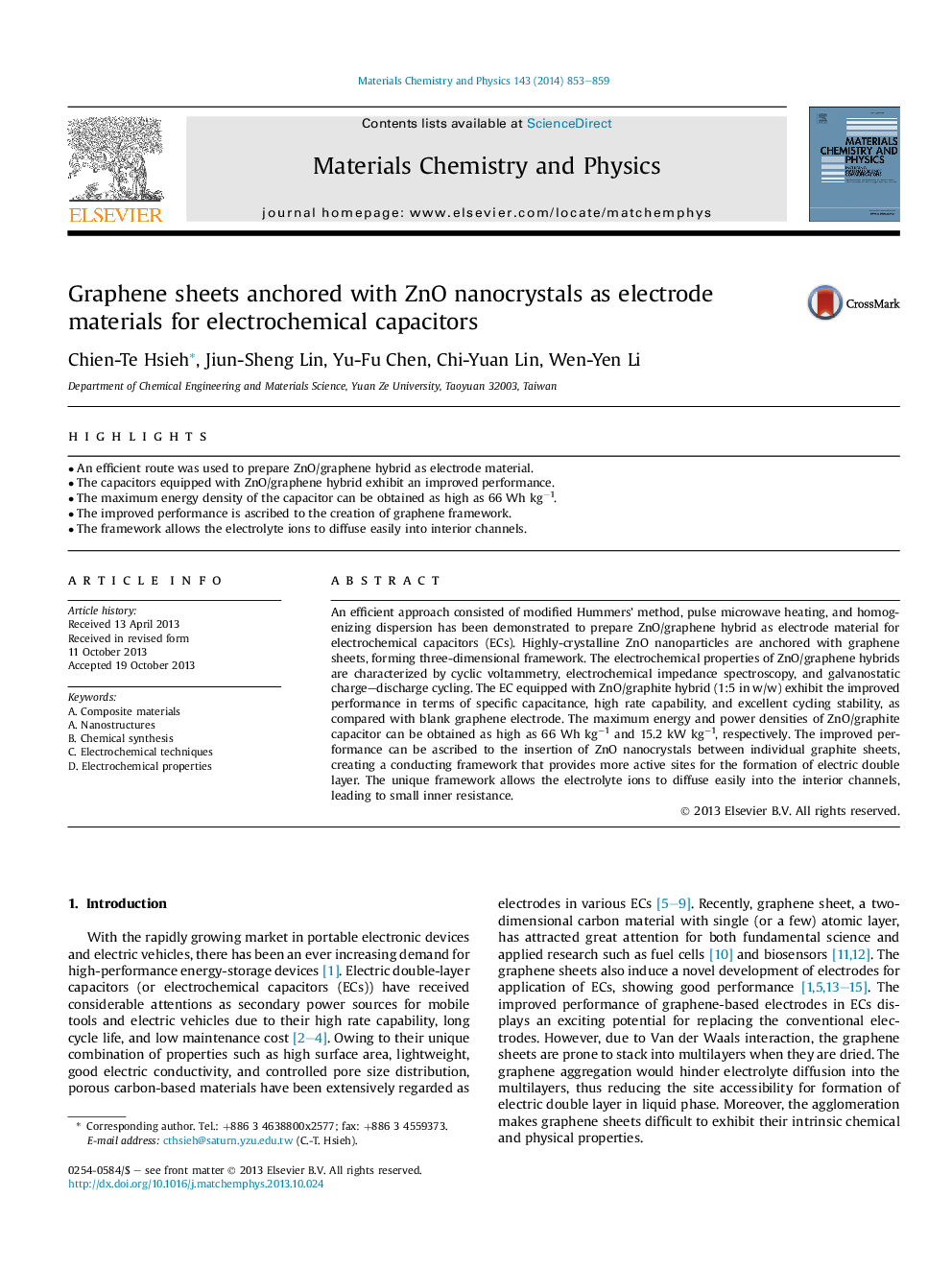| Article ID | Journal | Published Year | Pages | File Type |
|---|---|---|---|---|
| 1522183 | Materials Chemistry and Physics | 2014 | 7 Pages |
•An efficient route was used to prepare ZnO/graphene hybrid as electrode material.•The capacitors equipped with ZnO/graphene hybrid exhibit an improved performance.•The maximum energy density of the capacitor can be obtained as high as 66 Wh kg−1.•The improved performance is ascribed to the creation of graphene framework.•The framework allows the electrolyte ions to diffuse easily into interior channels.
An efficient approach consisted of modified Hummers' method, pulse microwave heating, and homogenizing dispersion has been demonstrated to prepare ZnO/graphene hybrid as electrode material for electrochemical capacitors (ECs). Highly-crystalline ZnO nanoparticles are anchored with graphene sheets, forming three-dimensional framework. The electrochemical properties of ZnO/graphene hybrids are characterized by cyclic voltammetry, electrochemical impedance spectroscopy, and galvanostatic charge–discharge cycling. The EC equipped with ZnO/graphite hybrid (1:5 in w/w) exhibit the improved performance in terms of specific capacitance, high rate capability, and excellent cycling stability, as compared with blank graphene electrode. The maximum energy and power densities of ZnO/graphite capacitor can be obtained as high as 66 Wh kg−1 and 15.2 kW kg−1, respectively. The improved performance can be ascribed to the insertion of ZnO nanocrystals between individual graphite sheets, creating a conducting framework that provides more active sites for the formation of electric double layer. The unique framework allows the electrolyte ions to diffuse easily into the interior channels, leading to small inner resistance.
